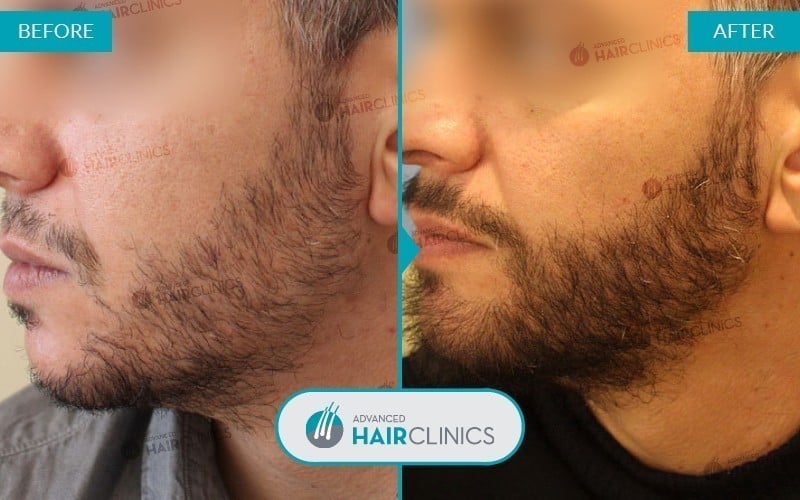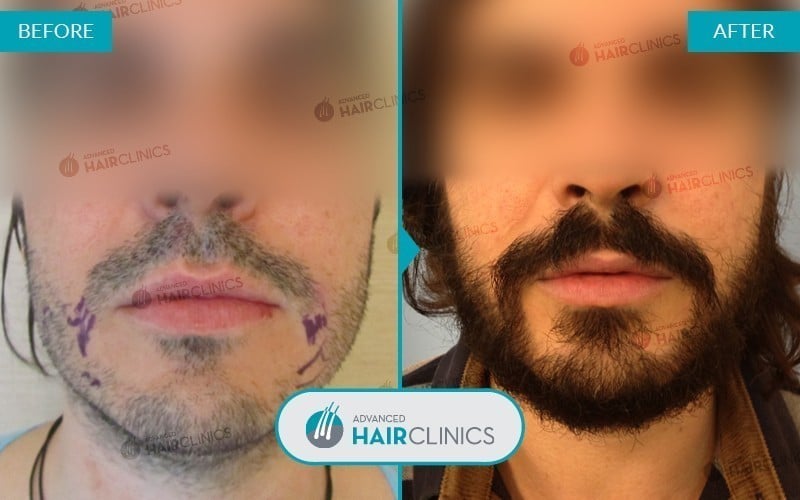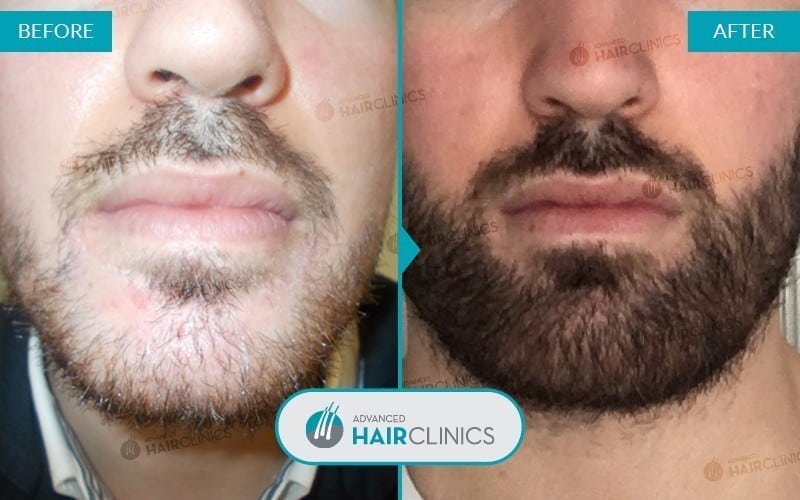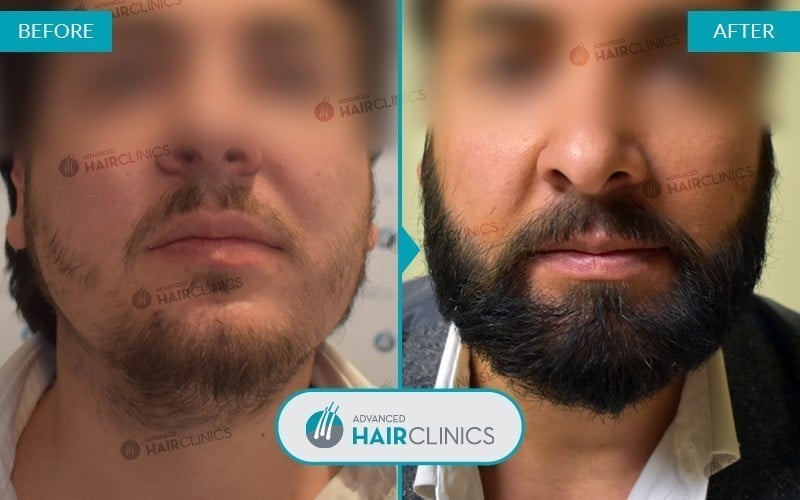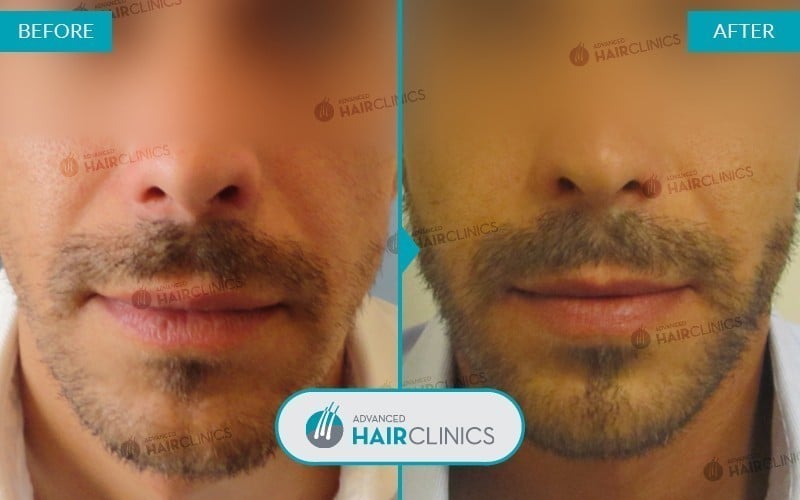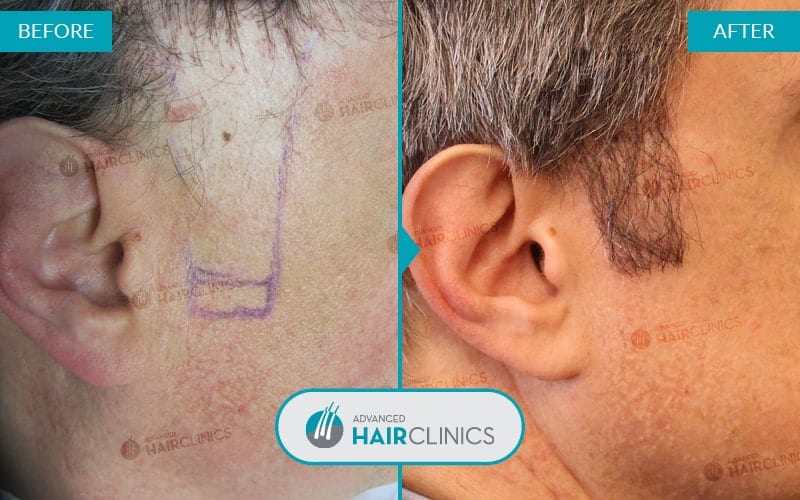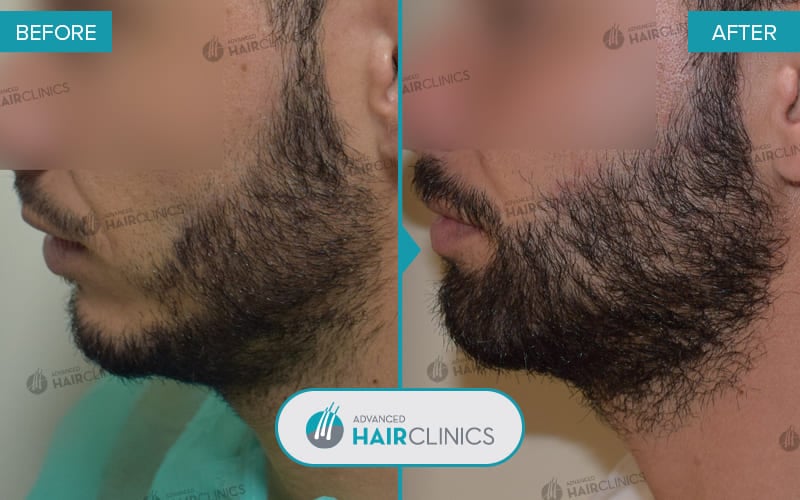FUE Beard Transplant
During the process of implanting beards or generally facial hair, the specificities of facial hair must be taken into account. Compared to the hair of the scalp, facial hair is thicker, having approximately twice the diameter. In addition, the facial hair follicles are mainly single-hair or double-hair. Hair follicles with more hairs are extremely rare. This means that, when transplanting hair from the scalp to the face by FUE, an attempt must be made to obtain hair follicles with hairs of as large a diameter as possible, usually originating from the occipital region.
Transplantation of facial hair, depending on the area of thinning (beard, moustache, sideburns, cheeks or combinations thereof) requires a significant number of hair follicles to achieve a satisfactory result in terms of density. The number of hair follicles required can vary, from a few hundred for the restoration of a scar or thickening in the moustache or sideburns, to several thousand hair follicles in cases of total facial hair restoration.

FUE BEARD TRANSPLANT
What it is
Advanced FUE (Follicular Unit Extraction) is a hair follicle implantation technique in which we transfer one by one the hair follicles from the donor area, which is preferably located in the occipital region, i.e. the back and lower part of the scalp, to the parts of the recipient area where there is thinning, i.e. the beard. It is a painless and quick technique which, when applied by an experienced and technically informed medical team, has an impressive and natural result.
FUE beard implantation can be completed in 1 session or, less frequently, in 2 sessions when the thinning of facial hair is very high and the density requirements are significant. This technique is intended for men of any age with sparse hair or thinning beard and for men who have suffered permanent loss of hair in the area or parts of their beard due to accident or burns.

Benefits FUE Beard Transplant
RESULTS
